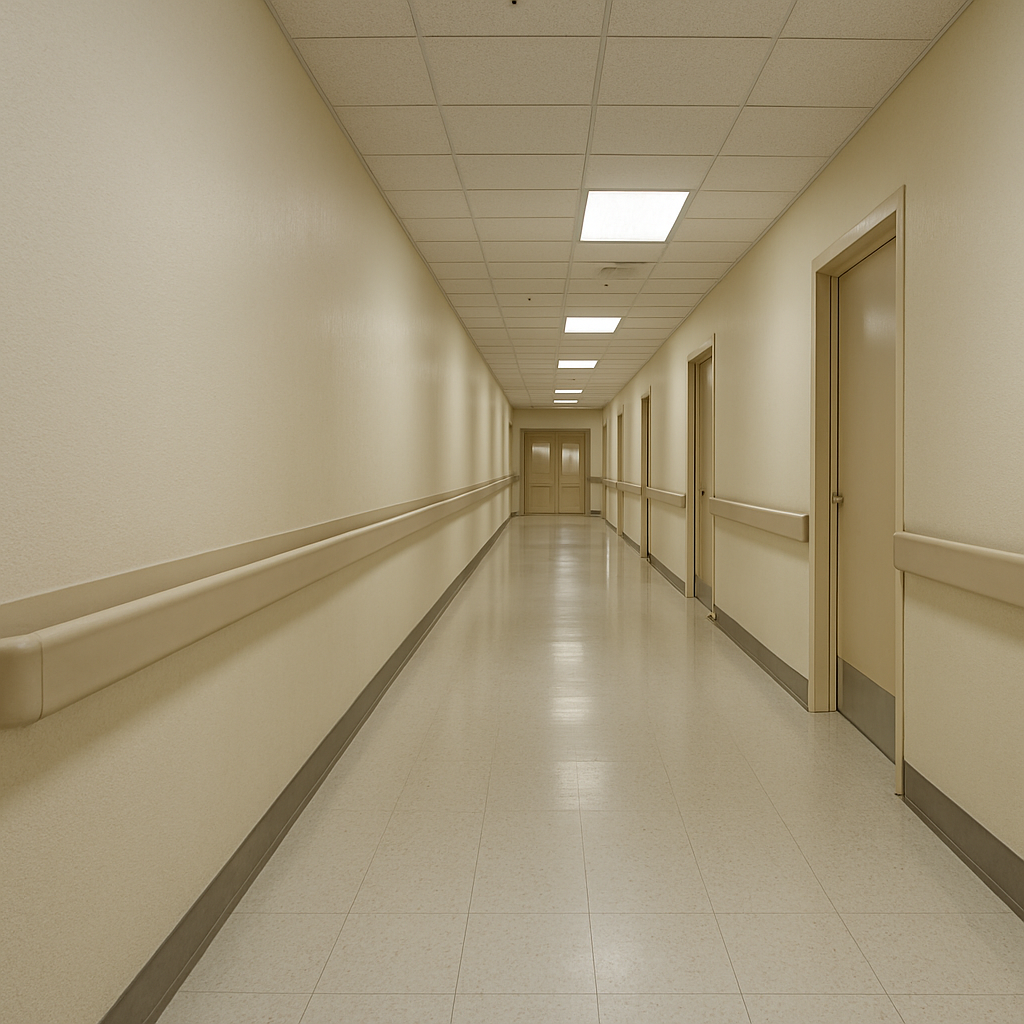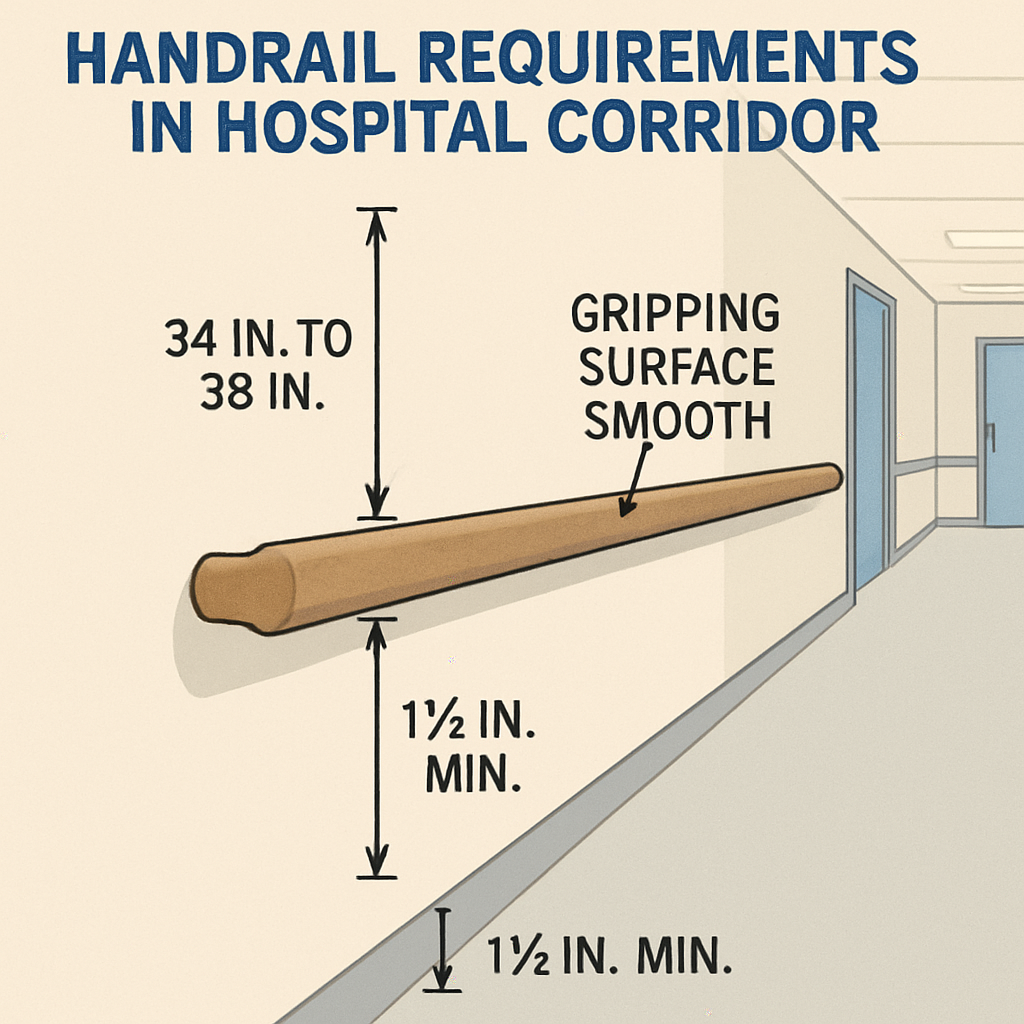 Service Hotline:13510328459
Service Hotline:13510328459
 205-206, 2nd Floor, Building 2, Xiazao Village Industrial Zone, Gaofeng Community, Dalang Street, Longhua District, Shenzhen City
205-206, 2nd Floor, Building 2, Xiazao Village Industrial Zone, Gaofeng Community, Dalang Street, Longhua District, Shenzhen City
 Service Hotline:13510328459
Service Hotline:13510328459
 205-206, 2nd Floor, Building 2, Xiazao Village Industrial Zone, Gaofeng Community, Dalang Street, Longhua District, Shenzhen City
205-206, 2nd Floor, Building 2, Xiazao Village Industrial Zone, Gaofeng Community, Dalang Street, Longhua District, Shenzhen City
Time:2025-09-24 Preview:
In hospital settings, safety and accessibility are of utmost importance. One of the critical components that contribute to a safe environment in hospitals is the installation of handrails in corridors. Handrails play a pivotal role in ensuring the safety and comfort of patients, staff, and visitors. In this article, we will explore the importance of handrails in hospital corridors, the requirements for their installation, and the benefits they provide.
Handrails are an essential safety feature in hospitals. They provide support and stability for individuals who may have difficulty walking or maintaining balance. This includes patients recovering from surgery, elderly patients, individuals with disabilities, and even staff members who may be carrying supplies or equipment.
One of the primary reasons for installing handrails in hospital corridors is to prevent falls and accidents. Hospitals are busy environments where people are constantly moving. Patients, in particular, may feel weak or unsteady, especially after medical procedures. Handrails offer them the support they need to move safely through the hospital.
Moreover, handrails can help prevent serious injuries resulting from falls. According to the World Health Organization, falls are a leading cause of injury worldwide, and hospitals are no exception. By providing handrails, hospitals can reduce the risk of falls and ensure a safer environment for everyone.
For patients with limited mobility, handrails are an invaluable aid. They offer a means of support that allows these individuals to navigate hospital corridors with greater ease and confidence. This increased mobility can lead to faster recovery times and a better overall hospital experience.

When it comes to installing handrails in hospital corridors, there are specific requirements that must be met. These requirements ensure that handrails are effective in providing the necessary support and safety.
The height of handrails in hospital corridors is a critical factor. According to building codes and regulations, handrails should typically be installed at a height between 34 and 38 inches from the floor. This height range is considered optimal for providing support to most individuals.
In terms of placement, handrails should be continuous along the length of the corridor. This ensures that individuals have access to support at all times as they move through the hospital.
The material used for handrails in hospital corridors should be durable, easy to clean, and resistant to bacteria. Stainless steel and vinyl are common choices because they meet these criteria. Additionally, the design of handrails should be smooth and free of sharp edges to prevent injuries.
Handrails in hospital corridors must also comply with accessibility standards, such as the Americans with Disabilities Act (ADA). These standards ensure that handrails are accessible to individuals with disabilities and provide the necessary support for all users.

The installation of handrails in hospital corridors offers numerous benefits, not only in terms of safety but also in enhancing the overall hospital experience for patients and staff.
Patients who feel safe and supported are more likely to have a positive experience during their hospital stay. Handrails provide the reassurance they need to move independently, boosting their confidence and contributing to a quicker recovery.
Hospital staff are often required to move quickly and efficiently. Handrails can assist them in navigating corridors safely, even when carrying medical equipment or supplies. This added support can enhance staff productivity and reduce the risk of workplace injuries.
By reducing the risk of falls and providing necessary support, handrails contribute to a safer hospital environment. This, in turn, can lead to a reduction in liability and legal issues related to accidents and injuries.

In conclusion, handrails in hospital corridors are a critical safety feature that benefits patients, staff, and visitors alike. They play a vital role in preventing falls, enhancing mobility, and promoting a safe and supportive hospital environment. By adhering to the proper requirements and standards, hospitals can ensure that their handrails provide the necessary support and contribute to a positive healthcare experience.
For hospitals looking to improve their safety measures, investing in high-quality handrails is a step in the right direction. Not only do they enhance safety, but they also improve the overall experience for everyone who walks through the hospital corridors.
